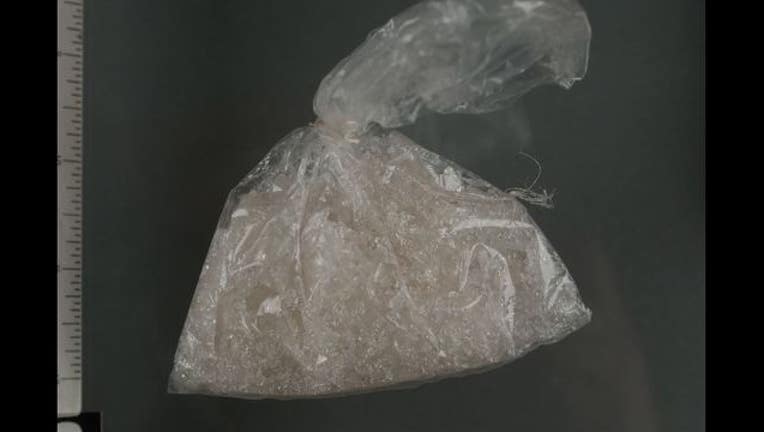Record amount of drugs seized in Minnesota, meth among highest

Photo credit: Drug Enforcement Administration (DEA)
ST. PAUL, Minn. (KMSP) - Last year, Violent Crime Enforcement Teams seized 488 pounds of meth throughout Minnesota, more than doubling those of 2015. Prescription pill seizures, including opioids also increased by 231 percent in 2016 with about 58.5 found.
According to the Minnesota Department of Health, more than half of the drug-related deaths in 2015 were related to prescription medications rather than illegal street drugs.
Among the drugs that were seen less frequently compared to last year are heroin and crack. Cocaine seizures, however, more than doubled.
While enforcement, legislation and education have all played a key role in reducing meth labs from 410 in 2003 to 13 last year, meth continues to flow into Minnesota, primarily from Mexico, the release said. Other drugs, such as fentanyl, are coming from China and the vast majority of heroin is also making its way to Minnesota from Mexico.
According to the Department of Human Services, treatment admissions for methamphetamine had peaked in 2005 at 6,703 admissions before declining. However, in 2010, methamphetamine admissions began to rise. In 2016, Minnesota had 11,555 treatment admissions for methamphetamine use, more than any other drug.
The Bureau of Criminal Apprehension special agents spent more than 28,000 hours working narcotics cases in 2016 – seizing more than 360 pounds of meth, nearly 230 pounds of marijuana and more than 110 pounds of cocaine.
Also, the laboratory saw evidence submissions containing fentanyl increase from a total of 14 in 2014 and 2015, to 75 in 2016. One 2016 case contained more than 2.7 liters of fentanyl. Just 2 mg can be deadly.
The VCETs are partially funded by the Office of Justice Programs and are multi-jurisdictional task forces that investigate narcotics, gangs and violent crime.
Dayton is proposing several initiatives and investments to help crack down on illegal drug activity and improve substance abuse treatment in Minnesota, including an expansion of funding for VCETs based on recommendations. VCETs currently serve 70 counties, but they say the need is in all 87 counties.
The governor also recommends increasing BCA funding to provide four additional narcotics special agents, a drug chemistry forensic scientist and a criminal intelligence analyst to support a drug monitoring initiative.

